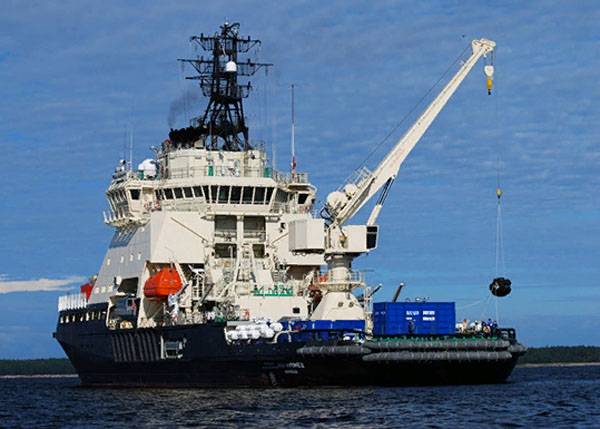Icebreaker "Ilya Muromets" showed part of its capabilities during trials in the Baltic
Icebreaker completed the program of speed and maneuverability tests. Also the transfer team carried out the work of all systems and equipment of the vessel.
Deck facilities were also tested, including boats and scooters. Validated crane equipment "Ilya Muromets."
В press-service The Ministry of Defense of the Russian Federation for the Navy reports that the second stage of testing will last until September September 10. It will be held on the grounds of the Baltic Fleet and in the waters of Baltiysk.
The crew of Ilya Muromets and the admission team of the Admiralty Shipyards enterprise also carried out the most difficult element of the program of the first stage - the pull test. The commissioning icebreaker’s task was to approach the test “glass”, move the towing end of the winch, catch the hook and, slowly moving away to remove 960 meters, give full speed ahead. At this moment, with the help of appropriate instruments, the amount of tractive effort that the icebreaker was developing was to be recorded.
This icebreaker was tested in two days allotted: one day was allotted for the crew’s training, the second - directly for the measurement procedure. "Ilya Muromets" showed an effort in 97 tons, on 4 tons exceeding the specified characteristics.

From the statement of the captain of the first rank Igor Dygalo:
Information